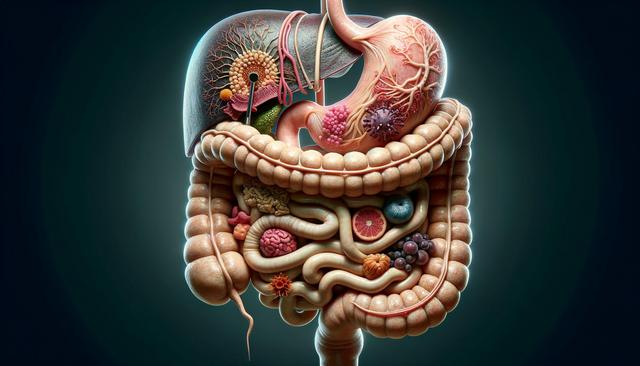Identifying the Early Symptoms of Stomach Cancer
One of the most important steps in addressing stomach cancer is recognizing its initial signs. Knowing what are the early symptoms of stomach cancer can help individuals seek medical attention before the condition advances. Early symptoms are often subtle and may mimic other common gastrointestinal issues, which can delay diagnosis. Some of the early signs include:
- Persistent indigestion or heartburn
- Loss of appetite without a clear reason
- Unexplained weight loss
- Nausea or vomiting
- Feeling full after eating small amounts
- Stomach pain or discomfort
Since these symptoms can overlap with other conditions, such as gastritis or peptic ulcers, it’s essential to consult a healthcare provider if they persist. Early detection offers a better chance for effective treatment and improved outcomes.
Diagnosis Through Medical Imaging
Once symptoms raise concern, the next step is diagnosis. Understanding how it is diagnosed using medical imaging is vital for both patients and caregivers. Medical imaging allows doctors to visualize the stomach and surrounding organs to detect abnormalities. Common imaging techniques include:
- Upper gastrointestinal (GI) endoscopy: A thin tube with a camera is inserted through the throat to examine the stomach lining directly.
- CT (computed tomography) scan: Provides detailed cross-sectional images of the abdomen to check for tumors or metastasis.
- Barium swallow: A contrast dye is used to highlight the stomach in X-rays for better visibility of structural changes.
In addition to imaging, a biopsy may be performed during an endoscopy to confirm the presence of cancer cells. Accurate diagnosis through these tools is essential for developing a personalized treatment plan.
Key Differences Between Cancer and Ulcers
Stomach ulcers and cancer can present with similar symptoms, making it important to understand the key differences between cancer and ulcers. While both conditions may cause abdominal pain and digestive discomfort, they differ significantly in cause, progression, and treatment.
Stomach ulcers are often caused by:
- Helicobacter pylori infection
- Chronic use of NSAIDs (non-steroidal anti-inflammatory drugs)
- Stress or spicy foods (as aggravating factors, not primary causes)
In contrast, stomach cancer may develop due to a combination of genetic predisposition, lifestyle factors, and chronic inflammation of the stomach lining. Unlike ulcers, cancerous growths may not respond to antacid medications and can lead to more severe symptoms over time. Differentiating between the two through imaging and biopsy is crucial for proper treatment.
Exploring Advanced Treatment Options
When it comes to managing stomach cancer, various advanced treatment options available provide pathways for care depending on the stage and type of cancer. Current treatment strategies are often multidisciplinary, combining surgery, medication, and supportive therapies.
Advanced treatments may include:
- Surgical resection: Removal of part or all of the stomach, particularly if the tumor is localized
- Chemotherapy: Use of drugs to kill cancer cells, often administered before or after surgery
- Radiation therapy: Targeted energy beams to destroy cancerous tissue
- Targeted therapies: Medications designed to attack specific cancer cell mechanisms
- Immunotherapy: Stimulating the patient’s immune system to fight cancer cells
The treatment approach is selected based on various factors, including the cancer stage, genetic markers, and overall health of the patient. A multidisciplinary team typically guides the treatment plan to ensure comprehensive care.
Expert Care and Therapy Explanations
Receiving care at reputable facilities can significantly influence outcomes. Many patients seek out top clinics for surgery and care due to their specialized expertise and access to cutting-edge technology. These clinics often provide a full spectrum of services, from diagnosis to post-treatment follow-up, under one roof.
Understanding the therapies offered is also essential. Chemotherapy and targeted therapy explained clearly can help patients make informed decisions about their treatment. Chemotherapy involves systemic medications that travel through the bloodstream to reach cancer cells, while targeted therapies focus on specific genes or proteins involved in cancer growth. These treatments often come with fewer side effects than traditional chemotherapy, although they may not be suitable for all patients.
When selecting a treatment center, consider facilities that offer:
- Experienced oncology teams
- Personalized treatment plans
- Access to clinical trials
- Comprehensive support services (nutrition, counseling, rehabilitation)
Collaborating with a skilled and compassionate medical team helps ensure the most effective and comfortable treatment journey possible.
Conclusion: Staying Informed and Proactive
Stomach cancer is a serious health concern, but early detection and modern medical advancements offer hope for effective management. By understanding what are the early symptoms of stomach cancer and knowing how it is diagnosed using medical imaging, individuals can take prompt action. Distinguishing the key differences between cancer and ulcers also helps avoid misdiagnosis. With a range of advanced treatment options available and access to top clinics for surgery and care, patients have more tools than ever before to fight the disease. Learning about chemotherapy and targeted therapy explained clearly equips patients with the knowledge to participate actively in their treatment decisions. Overall, staying informed and seeking timely medical attention are essential steps toward better outcomes and quality of life.




Leave a Reply